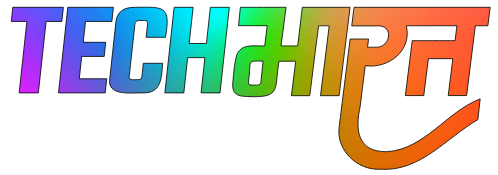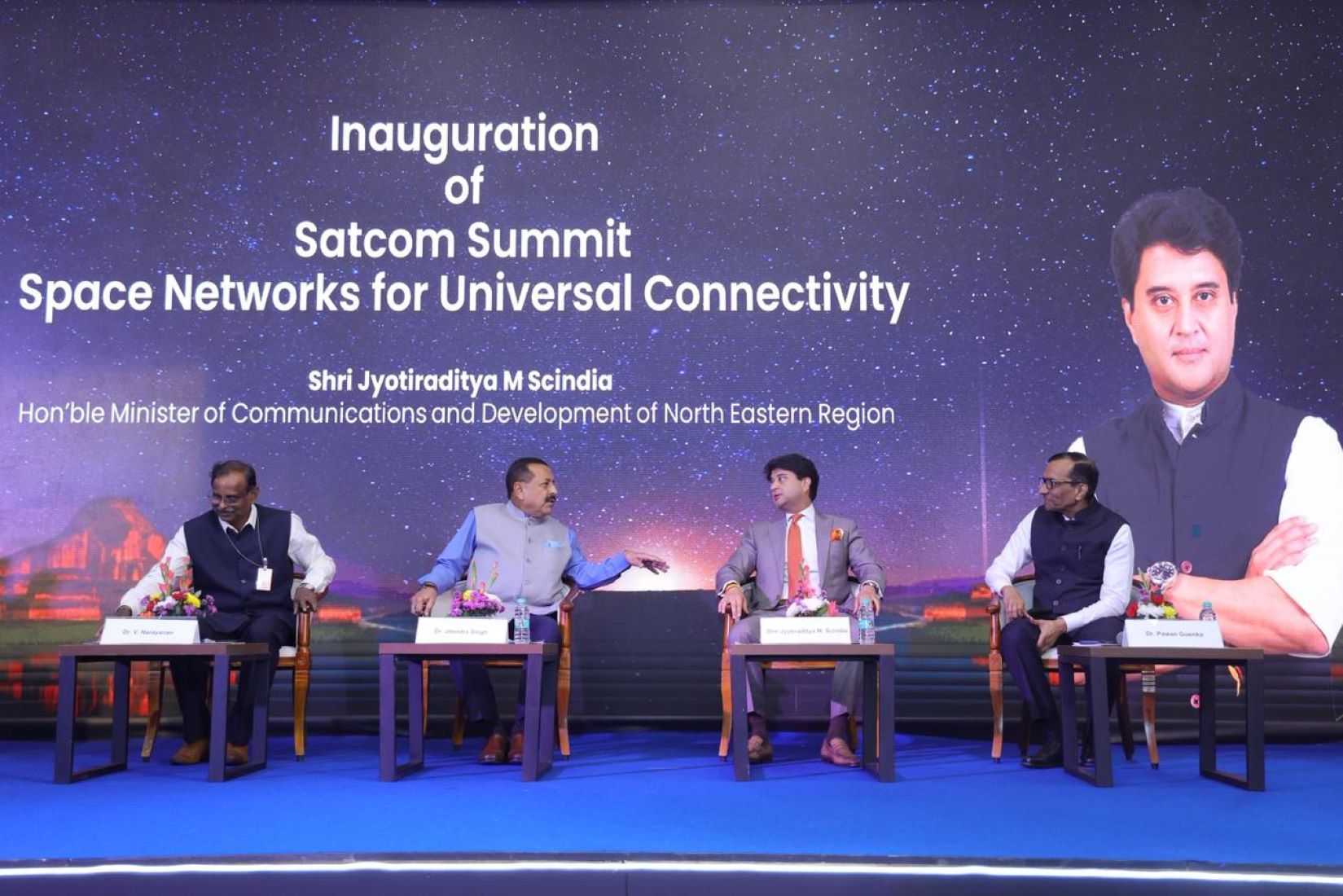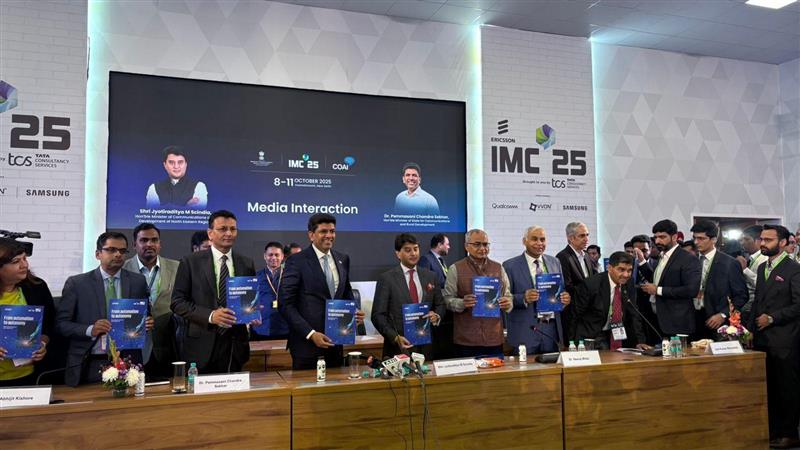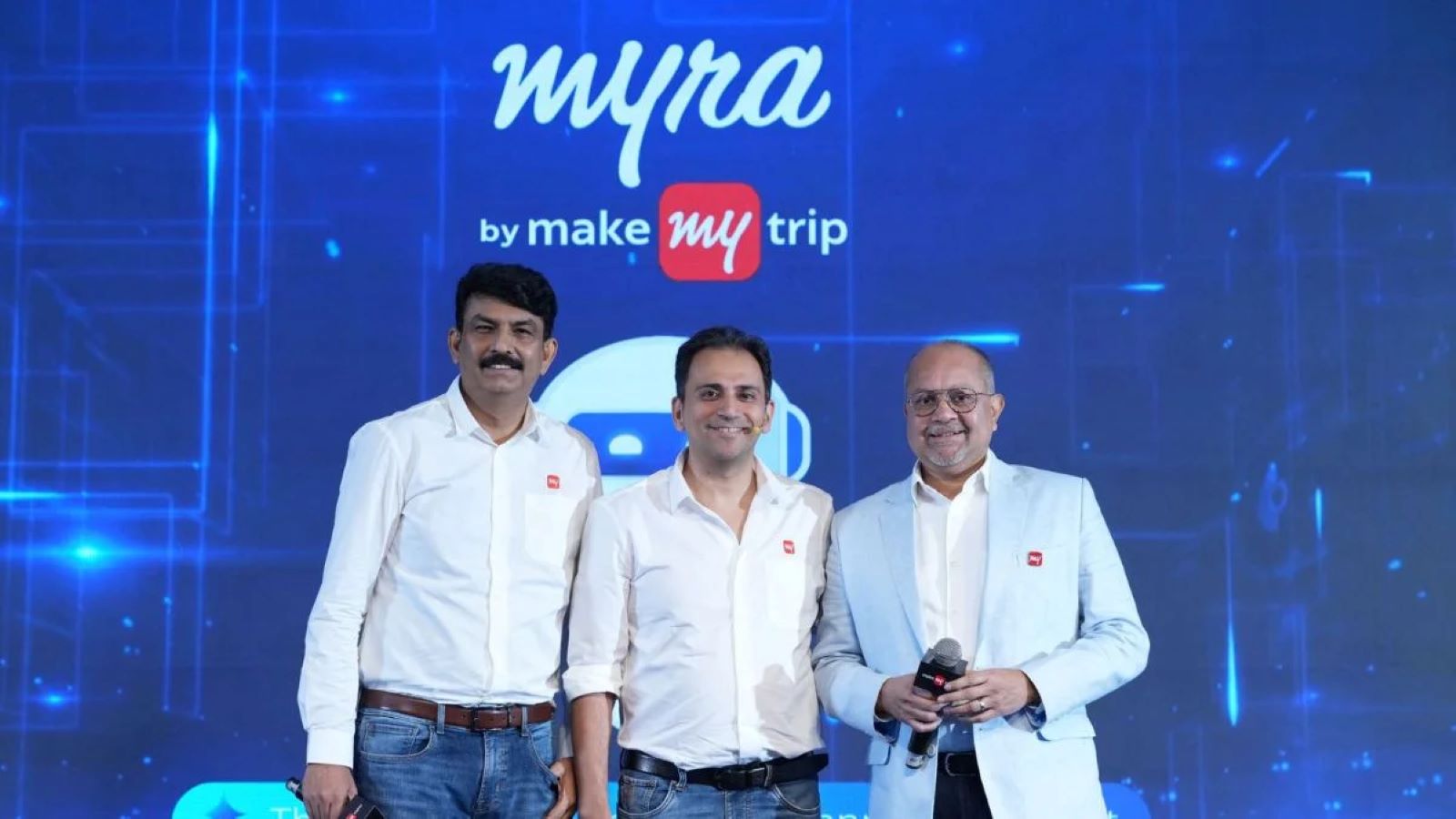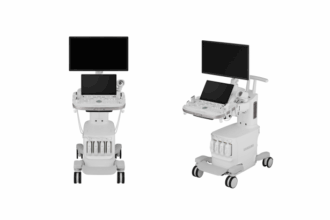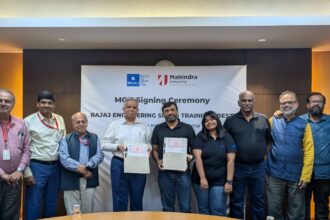The India Mobile Congress 2025 began with its first-ever Satcom Summit at the Yashobhoomi Convention Centre in New Delhi today. The event brought together policymakers, industry leaders, and experts to explore the growing role of satellite communication in shaping India’s digital landscape. Among those in attendance were Union Minister Shri Jyotiraditya M. Scindia and ISRO Chairman Dr. V. Narayanan, who shared insights on how satellite technology can connect even the most remote parts of the country and drive national development.
Key Takeaways
• The inaugural Satcom Summit was held on the opening day of the India Mobile Congress (IMC) 2025 in New Delhi.
• The government emphasized that satellite communication is vital for delivering essential services like remote healthcare and education to far-flung communities.
• Industry representatives urged quicker allocation of satellite spectrum to enable faster growth and meet increasing connectivity needs.
• Private companies such as Starlink and Viasat presented their strategies for expanding satellite internet access across India, with a strong focus on rural connectivity.
During the summit’s inauguration, Shri Jyotiraditya M. Scindia, Union Minister of Communications, described satcom as the “backbone of resilient infrastructure.” He remarked, “Satcom means a doctor in every home and a teacher in the remotest classroom.” Scindia also referenced the joint NASA-ISRO Synthetic Aperture Radar (NISAR) mission, saying it exemplifies India’s expanding footprint in global space technology.
Adding to that perspective, Dr. Jitendra Singh, Minister of State for Science and Technology, spoke about the government’s efforts to create a complete ecosystem for satellite communication. He pointed out that public-private partnerships have been instrumental in driving the sector’s growth and innovation.
The Path Forward for Indian Space Tech
ISRO Chairman Dr. V. Narayanan offered an overview of India’s recent achievements in space technology. He reminded participants that India now has the capability to launch more than 100 satellites in a single mission. He emphasized that building an extensive satellite network is key to realizing India’s vision of becoming a developed nation by 2047.
Still, not everything is moving as quickly as hoped. Industry leaders highlighted certain challenges that continue to hold the sector back. Lt Gen AK Bhatt (Retd), Director General of the Indian Space Association (ISpA), noted that delays in spectrum allocation have been a major hurdle. He advocated for a fair and balanced regulatory environment that encourages both government and private initiatives, while making it easier for new entrants to participate.
Private operators also outlined their contributions and expectations. Parnil Urdhwareshe, Director at Starlink Satellite Communications, said that growing government support for non-geostationary orbit (NGSO) systems is setting a solid base for a more connected India. He added that Starlink’s goal is not to replace but to complement existing internet services, particularly in underserved rural regions.
Gaurav Sharma, Managing Director of Viasat India, discussed some of the technical nuances. He explained that most internet applications function efficiently on standard satellite networks. However, for specialized needs such as online gaming or high-frequency trading, he suggested that a multi-orbit setup using GEO, MEO, and LEO satellite constellations delivers the best results.
The Satcom Summit forms part of the 9th edition of the India Mobile Congress, Asia’s largest digital technology forum. The event is jointly organized by the Department of Telecommunications (DoT) and the Cellular Operators Association of India (COAI).
Overall, the conversations at the summit hinted at a shared optimism, perhaps even a quiet urgency, about the role of satellite communication in bridging India’s digital divide. It’s clear that while there’s progress, the journey toward universal connectivity is still unfolding, one satellite at a time.
Frequently Asked Questions (FAQs)
Q. What is satcom or satellite communication?
A. Satellite communication, or satcom, uses artificial satellites to provide communication links between various points on Earth. It is especially useful for providing internet and broadcast services to remote or hard-to-reach areas where ground-based infrastructure is not available.
Q. Which companies are bringing satellite internet to India?
A. Several global and domestic companies are planning to offer satellite internet in India. Major players include Starlink (from SpaceX), Eutelsat OneWeb, and Amazon’s Project Kuiper. Reliance Jio’s JioSpaceFiber is also a key domestic player in this field.
Q. What is the India Mobile Congress (IMC)?
A. The India Mobile Congress (IMC) is the largest digital technology forum in Asia. It brings together industry leaders, government officials, and experts to showcase new technology and discuss the future of the telecom and digital sectors.
Q. How is the Indian government supporting the satcom sector?
A. The Indian government is promoting the satcom sector through policy reforms, such as the new Telecommunications Act, 2023. It also established IN-SPACe (Indian National Space Promotion and Authorization Center) as a single-window agency to streamline approvals for private space companies.
Q. How will satellite communication help people in rural areas?
A. Satellite communication can provide reliable, high-speed internet access to villages and remote locations that lack fibre optic cables or strong mobile network coverage. This can enable better access to online education, telemedicine, digital banking, and government services.
